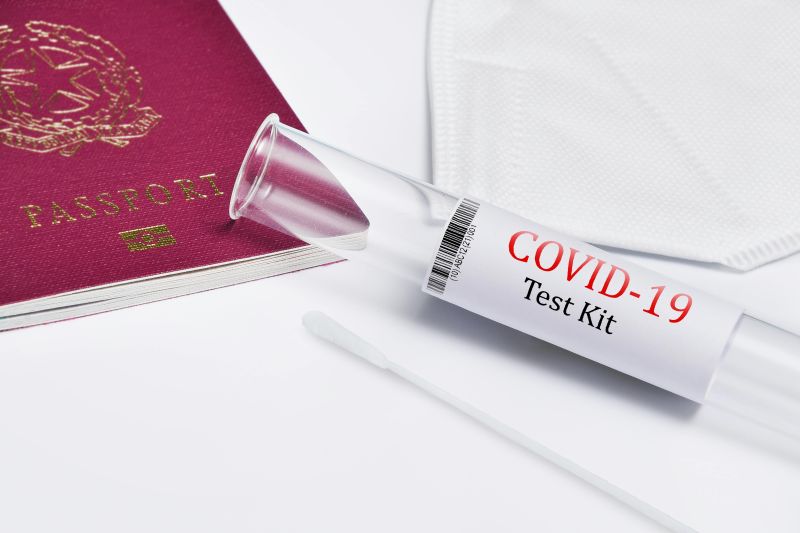In today’s digital landscape, optimizing your website’s performance is crucial for attracting and retaining visitors. One of the most effective strategies to achieve this is through A/B testing. This powerful technique allows you to compare two versions of a webpage to determine which one performs better in terms of user engagement, conversion rates, and overall effectiveness. As a full-service website design and SEO provider for professionals, small businesses, and corporations, we understand the importance of data-driven decisions in enhancing your online presence. By implementing A/B testing, you can make informed adjustments to your website, ensuring that every element—from headlines to call-to-action buttons—is fine-tuned for maximum impact. In this blog, we will explore how to effectively use A/B testing to improve your website’s performance and drive better results for your business.
Understanding A/B Testing: The Basics
A/B testing, also known as split testing, is a powerful method used to compare two versions of a webpage or app against each other to determine which one performs better. This technique is essential for optimizing website performance and enhancing user experience. The fundamental principle behind A/B testing is straightforward: you create two variations of a single element, such as a headline, button color, or layout, and then measure how each version impacts user behavior. By analyzing the results, you can make data-driven decisions that lead to improved conversion rates and overall website effectiveness.
To conduct an A/B test, you first need to identify a specific goal. This could be increasing the click-through rate on a call-to-action button, boosting newsletter sign-ups, or enhancing product sales. Once you have a clear objective, you can create two versions of the webpage: the original (A) and the modified version (B). It is crucial to ensure that the only difference between the two versions is the element you are testing. This isolation allows you to attribute any changes in performance directly to the variation being tested.
Next, you need to determine your sample size and duration for the test. A larger sample size generally provides more reliable results, as it reduces the impact of random fluctuations in user behavior. Additionally, running the test for a sufficient period ensures that you capture data across different times and user segments. Tools like Google Optimize, Optimizely, and VWO can help you manage and analyze your A/B tests effectively.
Once the test is live, you will monitor key performance indicators (KPIs) relevant to your goal. For example, if your objective is to increase sign-ups, you would track the number of users who complete the sign-up process for both versions. After the test concludes, you can analyze the data to see which version performed better. It is essential to use statistical significance to determine whether the results are meaningful or if they occurred by chance. A common threshold for statistical significance is a p-value of less than 0.05.
A/B testing is not just a one-time activity; it is an ongoing process. Continuous testing and optimization can lead to incremental improvements that significantly enhance your website’s performance over time. As you gather more data, you can refine your hypotheses and test new variations, creating a cycle of constant improvement.
One of the key benefits of A/B testing is that it allows you to make informed decisions based on actual user behavior rather than assumptions or gut feelings. This data-driven approach minimizes the risk of implementing changes that could negatively impact user experience or conversion rates. As the famous statistician W. Edwards Deming said, "In God we trust; all others bring data." This quote underscores the importance of relying on empirical evidence when making decisions about website design and functionality.
Moreover, A/B testing can help you understand your audience better. By analyzing how different segments of users respond to various changes, you can gain insights into their preferences and behaviors. This understanding can inform not only your website design but also your overall marketing strategy.
In conclusion, A/B testing is an invaluable tool for anyone looking to improve website performance. By systematically testing variations and analyzing the results, you can make informed decisions that enhance user experience and drive conversions. Remember, the key to successful A/B testing lies in having a clear objective, isolating the variable you are testing, and analyzing the results with a focus on statistical significance. For more insights on optimizing your website and marketing strategies, consider exploring our about page or our blog for additional resources. If you have any questions or need assistance, feel free to contact us.
Identifying Key Metrics for Your Website
When it comes to enhancing your website’s performance through A/B testing, identifying key metrics is crucial for measuring success and making informed decisions. Key metrics serve as benchmarks that help you evaluate the effectiveness of different variations of your website. By focusing on the right metrics, you can gain insights into user behavior, engagement levels, and overall conversion rates. This process begins with understanding what you want to achieve through your A/B tests. Are you looking to increase sales, improve user engagement, or enhance the overall user experience? Defining clear objectives will guide you in selecting the most relevant metrics to track.
One of the primary metrics to consider is conversion rate, which measures the percentage of visitors who complete a desired action, such as making a purchase or signing up for a newsletter. By comparing the conversion rates of different versions of a webpage, you can determine which design or content resonates better with your audience. Another important metric is bounce rate, which indicates the percentage of visitors who leave your site after viewing only one page. A high bounce rate may suggest that your landing page is not engaging enough or that it does not meet the expectations of your visitors. By analyzing bounce rates across different variations, you can identify elements that may need improvement.
User engagement metrics, such as average session duration and pages per session, also provide valuable insights. These metrics help you understand how users interact with your website and whether they find the content compelling enough to explore further. A/B testing can reveal which design elements or content formats keep users engaged longer, allowing you to optimize your site accordingly. Additionally, tracking click-through rates on specific calls to action can help you assess the effectiveness of your messaging and design in driving user actions.
It is also essential to consider the context of your website’s goals when selecting metrics. For instance, if your primary goal is to generate leads, you might focus on metrics such as lead conversion rate and the number of form submissions. Conversely, if your goal is to increase e-commerce sales, you would prioritize metrics like average order value and cart abandonment rate. Tailoring your metrics to align with your specific objectives ensures that you are measuring what truly matters for your business.
Furthermore, segmenting your data can provide deeper insights into how different user groups respond to your A/B tests. For example, you may want to analyze metrics based on demographics, device types, or traffic sources. This segmentation allows you to identify trends and patterns that may not be apparent when looking at aggregate data. By understanding how various segments interact with your website, you can create more targeted and effective A/B tests.
Another aspect to consider is the importance of statistical significance in your A/B testing results. It is vital to ensure that the changes you observe in your metrics are not due to random chance. Utilizing statistical analysis tools can help you determine whether the differences in performance between variations are significant enough to warrant changes to your website. This approach minimizes the risk of making decisions based on inconclusive data.
In conclusion, identifying key metrics is a foundational step in leveraging A/B testing to improve your website’s performance. By focusing on metrics such as conversion rate, bounce rate, user engagement, and context-specific goals, you can gain valuable insights into user behavior and preferences. Additionally, segmenting your data and ensuring statistical significance will enhance the reliability of your findings. As you refine your approach to A/B testing, remember that the ultimate goal is to create a more effective and user-friendly website that meets the needs of your audience. For more insights on improving your website’s performance, consider exploring our about page or check out our marketing strategies. If you have any questions or need assistance, feel free to contact us.
Designing Effective A/B Tests
A/B testing is a powerful method for optimizing website performance by comparing two versions of a webpage to determine which one yields better results. To design effective A/B tests, it is essential to follow a structured approach that maximizes the reliability and validity of your findings. The first step in designing an A/B test is to clearly define your goals. What specific metrics are you looking to improve? This could be anything from increasing conversion rates, enhancing user engagement, or reducing bounce rates. By setting clear objectives, you can focus your testing efforts on the elements that matter most to your business.
Next, identify the variables you want to test. This could include changes to headlines, images, call-to-action buttons, or overall layout. It is crucial to test only one variable at a time to ensure that any differences in performance can be attributed to that specific change. For instance, if you are testing a new call-to-action button, keep all other elements of the page constant. This isolation of variables helps in accurately assessing the impact of the change.
Once you have defined your goals and selected the variables to test, it is time to create your test variations. The original version of the webpage is referred to as the control, while the modified version is the variant. Ensure that both versions are visually appealing and functionally sound. It is also important to maintain a consistent user experience across both versions to avoid introducing bias into the results.
After creating your test variations, you need to determine your sample size and duration for the test. A larger sample size will yield more reliable results, as it reduces the margin of error. Use statistical significance calculators to help you determine the appropriate sample size based on your expected conversion rates and the minimum detectable effect you wish to observe. Additionally, running the test for a sufficient duration is vital to account for variations in user behavior over time. A/B tests should ideally run for at least one to two weeks to capture a representative sample of user interactions.
During the testing phase, it is essential to monitor the performance of both versions closely. Use analytics tools to track key performance indicators such as conversion rates, click-through rates, and user engagement metrics. This data will provide insights into how each version is performing and help you make informed decisions based on the results.
Once the test concludes, analyze the data to determine which version performed better. Look for statistically significant differences in performance metrics to validate your findings. If the variant outperforms the control, consider implementing the changes permanently. However, if the control performs better, it is essential to understand why the changes did not yield the desired results. This analysis can provide valuable insights for future tests and help refine your overall marketing strategy.
It is also beneficial to document your A/B testing process and results. Keeping a record of what you tested, the outcomes, and any insights gained will help inform future tests and contribute to a culture of continuous improvement within your organization. A/B testing is not a one-time activity but rather an ongoing process that can lead to incremental improvements in website performance over time.
In conclusion, designing effective A/B tests involves a systematic approach that includes defining clear goals, selecting appropriate variables, creating test variations, determining sample size and duration, monitoring performance, and analyzing results. By following these steps, you can leverage A/B testing to enhance your website’s performance and achieve your business objectives. For more insights on improving your website’s effectiveness, consider exploring our about page or check out our marketing strategies. If you have any questions or need assistance, feel free to contact us.
Analyzing A/B Test Results: What to Look For
When conducting A/B testing to enhance website performance, analyzing the results is a critical step that can significantly influence your decision-making process. The primary goal of A/B testing is to determine which version of a webpage or element performs better in terms of user engagement, conversion rates, or other key performance indicators. To effectively analyze A/B test results, there are several key factors to consider.
First and foremost, statistical significance is crucial. It is essential to ensure that the results you observe are not due to random chance. A common threshold for statistical significance is a p-value of less than 0.05, which indicates that there is less than a 5% probability that the observed differences occurred by chance. By using statistical tools or software, you can calculate the p-value for your test results. This will help you determine whether the changes you made to your website had a genuine impact on user behavior.
Next, consider the conversion rate of each variant. The conversion rate is the percentage of visitors who complete a desired action, such as signing up for a newsletter or making a purchase. By comparing the conversion rates of the control group and the variant group, you can assess which version is more effective. It is also important to look at the absolute number of conversions, as a small percentage increase can represent a significant difference in total conversions, especially if your website receives a high volume of traffic.
Another important aspect to analyze is user engagement metrics. These can include bounce rates, time on page, and click-through rates. A variant may have a higher conversion rate, but if it also leads to a higher bounce rate, it may not be the best long-term solution. Understanding how users interact with each version of your webpage can provide insights into their preferences and behaviors. For instance, if users spend more time on one version, it may indicate that the content is more engaging or relevant to their needs.
Segmentation is another valuable technique when analyzing A/B test results. Different user segments may respond differently to changes on your website. For example, new visitors may behave differently than returning customers. By segmenting your audience based on demographics, behavior, or source of traffic, you can gain deeper insights into how various groups interact with your site. This can help you tailor your website to meet the specific needs of different user segments, ultimately improving overall performance.
Additionally, consider the context of your test. External factors such as seasonality, marketing campaigns, or changes in user behavior can influence the results of your A/B test. It is essential to take these factors into account when analyzing your results. For instance, if you conducted a test during a holiday season, the results may not be representative of typical user behavior. Always strive to conduct tests over a sufficient duration to account for fluctuations in traffic and behavior.
Lastly, document your findings and insights. Keeping a record of your A/B test results, including what was tested, the outcomes, and any lessons learned, can be invaluable for future tests. This documentation can help you identify patterns over time and refine your testing strategy. It also serves as a reference for your team, ensuring that everyone is aligned on what has been tested and what the outcomes were.
In conclusion, analyzing A/B test results involves a comprehensive approach that includes assessing statistical significance, conversion rates, user engagement metrics, audience segmentation, contextual factors, and thorough documentation. By focusing on these elements, you can make informed decisions that will enhance your website’s performance. For more insights on improving your website’s effectiveness, consider exploring our about page or our marketing resources. If you have any questions or need assistance, feel free to contact us.
Common Mistakes to Avoid in A/B Testing
A/B testing is a powerful method for optimizing website performance, allowing businesses to make data-driven decisions that enhance user experience and increase conversion rates. However, many organizations fall into common pitfalls that can undermine the effectiveness of their A/B testing efforts. Understanding these mistakes is crucial for anyone looking to leverage A/B testing to its fullest potential.
One of the most prevalent mistakes is not defining clear objectives before starting an A/B test. Without specific goals, it becomes difficult to measure success or determine what changes are necessary. It is essential to establish what you want to achieve, whether it is increasing click-through rates, improving user engagement, or boosting sales. Clear objectives guide the entire testing process and help in interpreting the results accurately.
Another common error is testing too many variables at once. While it may be tempting to change multiple elements on a webpage to see what works best, this approach can lead to confusion and inconclusive results. Instead, focus on one variable at a time, such as the color of a call-to-action button or the wording of a headline. This method allows for a clearer understanding of which specific change is driving the desired outcome.
Additionally, many businesses fail to run their tests for an adequate duration. A/B tests need to gather enough data to produce statistically significant results. Running a test for too short a period can lead to misleading conclusions based on insufficient data. It is important to consider factors such as traffic volume and the typical user behavior cycle when determining the duration of your test. A good rule of thumb is to run tests for at least one full business cycle to capture variations in user behavior.
Sample size is another critical aspect that is often overlooked. Testing with a sample size that is too small can result in unreliable data and skewed results. Ensure that your sample size is large enough to provide meaningful insights. This can be achieved by calculating the required sample size based on your expected conversion rates and the minimum detectable effect you wish to observe.
Moreover, failing to segment your audience can lead to missed opportunities for optimization. Different user groups may respond differently to changes on your website. By segmenting your audience based on demographics, behavior, or other criteria, you can gain deeper insights into how various groups interact with your site. This targeted approach allows for more tailored optimizations that can significantly improve overall performance.
Another mistake is not considering external factors that may influence test results. Seasonal trends, marketing campaigns, or even changes in the competitive landscape can impact user behavior. It is essential to account for these variables when analyzing A/B test results to avoid attributing changes in performance solely to the test itself.
Lastly, many organizations neglect to document their A/B testing process and results. Keeping a detailed record of what tests were conducted, the hypotheses behind them, and the outcomes can provide valuable insights for future testing efforts. This documentation helps in understanding what strategies have worked in the past and can guide future decisions, making the A/B testing process more efficient and effective.
In conclusion, avoiding these common mistakes in A/B testing can significantly enhance your website’s performance. By defining clear objectives, testing one variable at a time, ensuring adequate test duration and sample size, segmenting your audience, considering external factors, and documenting your process, you can create a robust A/B testing strategy. For more information on optimizing your website and improving your marketing efforts, visit our about page or explore our marketing resources. If you have any questions or need assistance, feel free to contact us.
Tools and Resources for A/B Testing
A/B testing is a powerful method for optimizing website performance, allowing businesses to make data-driven decisions that enhance user experience and increase conversion rates. To effectively implement A/B testing, it’s essential to utilize the right tools and resources that can streamline the process and provide valuable insights. Various platforms are available that cater to different needs, from simple testing to comprehensive analytics.
One of the most popular tools for A/B testing is Google Optimize. This free tool integrates seamlessly with Google Analytics, enabling users to create and run experiments without extensive technical knowledge. Google Optimize allows you to test different versions of your web pages, analyze user interactions, and determine which version performs better. Its user-friendly interface makes it accessible for marketers and web developers alike, ensuring that anyone can leverage its capabilities to improve website performance.
Another excellent option is Optimizely, which is known for its robust features and flexibility. Optimizely offers a comprehensive suite for experimentation, allowing users to conduct A/B tests, multivariate tests, and personalization campaigns. Its advanced targeting options enable businesses to tailor experiences based on user segments, ensuring that the right audience sees the right content. With detailed reporting and analytics, Optimizely helps teams understand the impact of their changes and make informed decisions moving forward.
For those looking for a more budget-friendly solution, VWO (Visual Website Optimizer) is a great choice. VWO provides a range of testing options, including A/B testing, split URL testing, and multivariate testing. Its visual editor allows users to make changes to their web pages without needing to write code, making it ideal for marketers who may not have a technical background. VWO also offers heatmaps and session recordings, providing deeper insights into user behavior and helping teams identify areas for improvement.
If you are interested in a more comprehensive approach to website optimization, consider using tools like Crazy Egg. Crazy Egg focuses on visual analytics, offering heatmaps, scroll maps, and user recordings that help you understand how visitors interact with your site. By combining these insights with A/B testing, you can make informed decisions about design changes and content adjustments that will resonate with your audience.
In addition to these tools, it is crucial to have a solid understanding of your target audience and their behavior. Resources such as user surveys and feedback forms can provide qualitative data that complements the quantitative data gathered from A/B testing. Understanding user motivations and preferences can guide your testing strategy, ensuring that you are making changes that align with your audience’s needs.
Moreover, keeping up with industry best practices and trends is vital for successful A/B testing. Blogs and articles from reputable sources can provide insights into new techniques and strategies that can enhance your testing efforts. For instance, exploring the latest trends in digital marketing can help you identify innovative approaches to A/B testing that you may not have considered before. You can find valuable information on this topic by visiting our blog.
Finally, collaboration and communication within your team are essential for effective A/B testing. Utilizing project management tools can help streamline the process, ensuring that everyone is on the same page regarding testing goals and results. Regularly sharing findings and insights from your tests can foster a culture of experimentation and continuous improvement within your organization.
In conclusion, leveraging the right tools and resources for A/B testing is crucial for enhancing website performance. By utilizing platforms like Google Optimize, Optimizely, and VWO, along with visual analytics tools like Crazy Egg, you can gain valuable insights into user behavior and make data-driven decisions. Coupled with a solid understanding of your audience and a commitment to continuous learning, these tools can significantly improve your website’s effectiveness and drive better results. For more information on how to enhance your marketing strategies, feel free to reach out through our contact page or learn more about our services on our about page.
Implementing Changes Based on A/B Test Insights
Once you have conducted your A/B tests and gathered valuable insights, the next crucial step is to implement changes based on those findings. This process is essential for translating data into actionable strategies that can significantly enhance your website’s performance. A/B testing allows you to compare two or more variations of a webpage to determine which one performs better in terms of user engagement, conversion rates, and overall effectiveness. However, the real challenge lies in effectively applying the insights gained from these tests to optimize your website.
To begin with, it is important to analyze the results of your A/B tests thoroughly. Look at the metrics that matter most to your business goals, such as click-through rates, conversion rates, and bounce rates. Understanding which variation performed better and why is key to making informed decisions. For instance, if a specific call-to-action button color led to a higher conversion rate, consider implementing that change across your website. This data-driven approach ensures that your modifications are grounded in actual user behavior rather than assumptions.
Once you have identified the winning variations, prioritize the changes based on their potential impact. Not all changes will have the same level of influence on your website’s performance. Focus on implementing the changes that are likely to yield the highest returns first. This prioritization can be guided by factors such as the volume of traffic to the tested page and the significance of the metric improvements observed during the test. By addressing the most impactful changes first, you can maximize the benefits of your A/B testing efforts.
After prioritizing the changes, it is time to implement them on your website. This may involve updating design elements, modifying content, or adjusting functionality. Ensure that the implementation process is seamless and does not disrupt the user experience. It is also advisable to document the changes made and the rationale behind them. This documentation will serve as a valuable reference for future tests and optimizations, allowing you to build on your successes and learn from any missteps.
Following the implementation of changes, it is crucial to monitor the performance of the updated pages. Use analytics tools to track key performance indicators and assess whether the changes have led to the desired improvements. This ongoing analysis will help you understand the long-term effects of your modifications and whether further adjustments are necessary. If the changes do not yield the expected results, do not hesitate to revisit the data and consider running additional tests to explore alternative solutions.
In addition to monitoring performance, it is beneficial to gather user feedback after implementing changes. Engaging with your audience through surveys or feedback forms can provide qualitative insights that complement your quantitative data. Understanding user sentiment can help you refine your approach and make more informed decisions in future A/B tests.
Moreover, consider the broader context of your website and how the changes fit into your overall marketing strategy. A/B testing should not be a one-time effort but rather an ongoing process of optimization. Regularly revisit your testing strategy to identify new areas for improvement and to ensure that your website continues to meet the evolving needs of your users. By fostering a culture of continuous improvement, you can stay ahead of the competition and enhance user satisfaction.
Finally, do not forget to share your findings and successes with your team. Collaboration and communication are vital in ensuring that everyone is aligned with the changes being made and understands the rationale behind them. This collective knowledge can lead to more innovative ideas and strategies for future A/B tests.
In conclusion, implementing changes based on A/B test insights is a critical step in improving your website performance. By analyzing results, prioritizing impactful changes, monitoring performance, gathering user feedback, and fostering a culture of continuous improvement, you can effectively leverage A/B testing to enhance user engagement and drive conversions. For more information on optimizing your website and marketing strategies, visit our about page or explore our marketing resources. If you have any questions or need assistance, feel free to contact us.
In conclusion, A/B testing is a powerful tool that can significantly enhance your website’s performance and user experience. By systematically comparing different versions of your web pages, you can gain valuable insights into what resonates with your audience, leading to informed decisions that drive engagement and conversions. Remember to start with clear hypotheses, focus on one variable at a time, and analyze your results thoroughly to understand the impact of your changes. As you implement A/B testing as a regular part of your website optimization strategy, you’ll not only refine your site’s effectiveness but also foster a culture of data-driven decision-making within your organization. Embrace the iterative nature of A/B testing, and watch as your website evolves into a more effective platform that meets the needs of your users while achieving your business goals. Happy testing!






